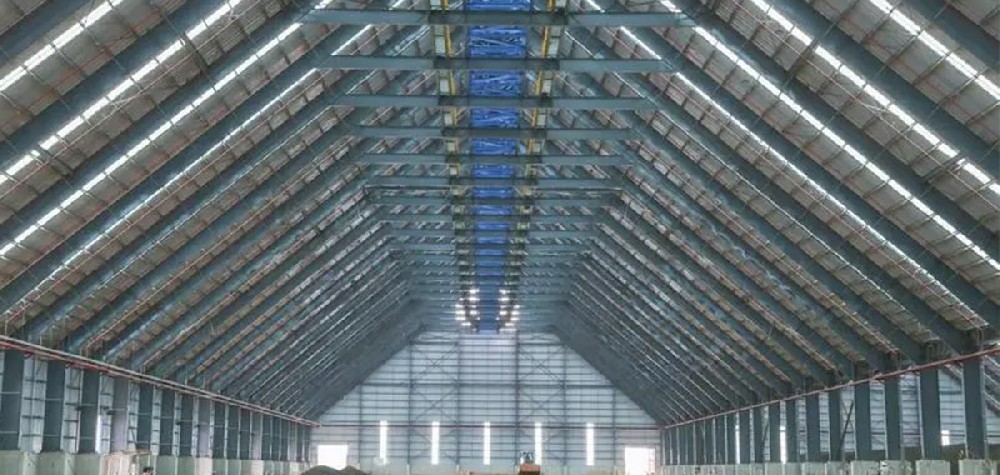Navigation Menu
Contact Us
- Email:
- info@wxavatar.com
- Address:
- Yurong Village, Yuqi Street, Huishan District, Wuxi, China.
Release Date:May 30, 2025 Visit:49 Source:Roll Forming Machine Factory
The manufacturing industry is experiencing a significant shift as more factories adopt corrugated plate automatic lines for their production processes. This transition reflects the evolving needs of modern manufacturing, where efficiency, precision, and consistency are paramount. Corrugated plate automatic lines offer numerous advantages that address these requirements while maintaining product quality.

Increased Production Efficiency
One of the primary reasons factories are implementing corrugated plate automatic lines is the substantial improvement in production efficiency. These automated systems can operate continuously with minimal human intervention, significantly reducing downtime between production cycles. The streamlined process from raw material feeding to finished product output eliminates many manual handling steps that traditionally slowed production.
Automatic lines maintain consistent operating speeds that far exceed manual or semi-automated processes. This consistency allows factories to meet growing market demands without compromising on quality standards. The ability to predict output more accurately also improves planning and inventory management.
Enhanced Product Consistency
Quality control becomes more reliable with corrugated plate automatic lines. These systems are programmed to maintain precise parameters throughout the production process, ensuring each corrugated plate meets exact specifications. Variations in product dimensions, wave patterns, or material distribution—common in manual operations—are virtually eliminated.
The automated nature of these lines reduces human error factors that can affect product quality. Sensors and monitoring systems continuously check product quality, making immediate adjustments when necessary. This results in a more uniform final product that meets stringent industry standards.
Reduced Labor Requirements
Modern corrugated plate automatic lines require fewer operators compared to traditional manufacturing setups. While skilled technicians are still needed for supervision, maintenance, and quality control, the heavy reliance on manual labor is significantly reduced. This change in workforce requirements helps factories address challenges related to labor availability and rising wage costs.
The automation of repetitive and physically demanding tasks also improves workplace conditions. Employees can focus on more skilled aspects of production, maintenance, and process optimization rather than manual handling of materials.
Improved Safety Features
Safety standards in manufacturing facilities have become increasingly stringent, and corrugated plate automatic lines help meet these requirements. These systems incorporate multiple safety mechanisms, including emergency stops, protective barriers, and automated warning systems. The reduction in direct human interaction with moving parts and heavy machinery decreases the potential for workplace accidents.
Many automatic lines feature advanced sensors that can detect abnormalities in operation and either correct them automatically or shut down the system to prevent damage or injury. This proactive approach to safety protects both workers and equipment.
Better Material Utilization
Corrugated plate automatic lines optimize material usage through precise control systems. Computer-guided cutting and forming processes minimize waste by calculating the most efficient patterns and sequences. This precision leads to significant material savings over time, improving cost-efficiency in production.
The automated tracking of material usage also provides valuable data for inventory management and purchasing decisions. Factories can better predict material needs and reduce excess stock, leading to improved cash flow and storage space utilization.
Adaptability to Various Specifications
Modern corrugated plate automatic lines offer remarkable flexibility in production. With programmable controls, these systems can quickly switch between different plate specifications, wave patterns, and material types. This adaptability allows manufacturers to respond efficiently to custom orders and changing market demands without extensive retooling or downtime.
The ability to store multiple production recipes in the system's memory enables rapid changeovers between product types. This feature is particularly valuable for factories serving diverse markets or handling specialized orders alongside standard production.
Data Collection and Process Optimization
Corrugated plate automatic lines generate valuable production data that can be used for continuous improvement. These systems track performance metrics, maintenance needs, and quality control statistics, providing managers with insights to optimize operations. The data can reveal patterns in equipment performance, material behavior, and production efficiency that might otherwise go unnoticed.
This information supports predictive maintenance strategies, helping prevent unexpected downtime by addressing potential issues before they cause production interruptions. The analytical capabilities of modern automatic lines contribute to long-term operational improvements and cost reductions.

Conclusion
The transition to corrugated plate automatic lines represents a strategic investment for manufacturers seeking to remain competitive in today's market. These systems address multiple operational challenges simultaneously—boosting productivity, ensuring quality, reducing costs, and improving workplace safety. As technology continues to advance, the capabilities of these automatic lines will likely expand further, offering even greater benefits to early adopters in the manufacturing sector.
Factories implementing corrugated plate automatic lines position themselves for sustainable growth, with the flexibility to adapt to future market changes and technological developments. This upgrade path has become not just an option, but a necessity for manufacturers aiming to meet the evolving demands of their industry.